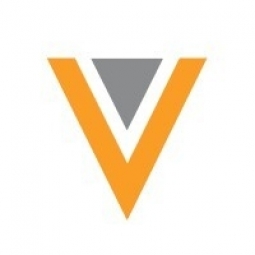技术
- 应用基础设施与中间件 - 数据交换与集成
- 平台即服务 (PaaS) - 应用开发平台
适用行业
- 药品
适用功能
- 维护
- 产品研发
用例
- 现场人员安全管理
- 视觉质量检测
服务
- 云规划/设计/实施服务
- 测试与认证
关于客户
EQRx 是一家生物技术公司,总部位于美国马萨诸塞州剑桥。该公司于 2020 年成立,其使命是以极低的价格提供创新药物。为了实现这一目标,EQRx 需要构建一个现代化的开发平台,该平台可以协调跨职能业务流程并大规模提高效率。该公司是制药行业的开拓者,在短时间内建立了跨多个部门的现代化开发平台。 EQRx 致力于持续改进,并拥有强大的治理框架,以确保为整个公司做出正确的决策。
挑战
EQRx 是一家总部位于马萨诸塞州剑桥的生物技术公司,成立于 2020 年,其雄心勃勃的使命是以大幅降低的价格提供创新药物。为了实现这一目标,该公司需要构建一个现代化的开发平台,该平台可以协调跨职能业务流程并大规模提高效率。该平台需要满足公司对最少定制开发、可持续总拥有成本以及产品化集成的要求,以减少维护和复杂性。面临的挑战是在短时间内在临床数据、临床操作、质量、监管和安全等各个部门实施该平台。
解决方案
EQRx 选择 Veeva Development Cloud 作为产品开发活动的操作系统。具有统一应用程序套件的连接平台满足了公司的要求。 EQRx 在不到 12 个月的时间里在各个部门实施了 13 个 Vault 应用程序。该公司的三阶段历程首先是通过 Vault 应用程序的基本构建为增长奠定基础,然后是在关键接触点集成系统和数据。第三阶段涉及利用正确的系统在正确的时间提供正确的数据来创建无缝的、上下文相关的用户体验。 EQRx 采用敏捷方法来实施 Veeva 开发云,在持续改进的循环中评估、优化和发布功能增强。强大的治理框架使利益相关者专注于创建一个通用的端到端平台来优化跨职能业务流程。
运营影响
数量效益

Case Study missing?
Start adding your own!
Register with your work email and create a new case study profile for your business.
相关案例.

Case Study
Case Study: Pfizer
Pfizer’s high-performance computing software and systems for worldwide research and development support large-scale data analysis, research projects, clinical analytics, and modeling. Pfizer’s computing services are used across the spectrum of research and development efforts, from the deep biological understanding of disease to the design of safe, efficacious therapeutic agents.

Case Study
Fusion Middleware Integration on Cloud for Pharma Major
Customer wanted a real-time, seamless, cloud based integration between the existing on premise and cloud based application using SOA technology on Oracle Fusion Middleware Platform, a Contingent Worker Solution to collect, track, manage and report information for on-boarding, maintenance and off-boarding of contingent workers using a streamlined and Integrated business process, and streamlining of integration to the back-end systems and multiple SaaS applications.

Case Study
Process Control System Support
In many automated production facilities, changes are made to SIMATIC PCS 7 projects on a daily basis, with individual processes often optimised by multiple workers due to shift changes. Documentation is key here, as this keeps workers informed about why a change was made. Furthermore, SIMATIC PCS 7 installations are generally used in locations where documentation is required for audits and certification. The ability to track changes between two software projects is not only an invaluable aid during shift changes, but also when searching for errors or optimising a PCS 7 installation. Every change made to the system is labour-intensive and time-consuming. Moreover, there is also the risk that errors may occur. If a change is saved in the project, then the old version is lost unless a backup copy was created in advance. If no backup was created, it will no longer be possible to return to the previous state if and when programming errors occur. Each backup denotes a version used by the SIMATIC PCS 7 system to operate an installation. To correctly interpret a version, information is required on WHO changed WHAT, WHERE, WHEN and WHY: - Who created the version/who is responsible for the version? - Who released the version? - What was changed in the version i.e. in which block or module of the SIMATIC PCS 7 installation were the changes made? - When was the version created? Is this the latest version or is there a more recent version? - Why were the changes made to the version? If they are part of a regular maintenance cycle, then is the aim to fix an error or to improve production processes? - Is this particular version also the version currently being used in production? The fact that SIMATIC PCS 7 projects use extremely large quantities of data complicates the situation even further, and it can take a long time to load and save information as a result. Without a sustainable strategy for operating a SIMATIC PCS 7 installation, searching for the right software version can become extremely time-consuming and the installation may run inefficiently as a result.

Case Study
ELI LILLY ADOPTS MICROMEDIA’S ALERT NOTIFICATION SYSTEM
Pharmaceutical production is subject to a strict set of enforced rules that must be adhered to and compliance to these standards is critically necessary. Due to the efforts of WIN 911’s strategic partner Micromedia, Lilly was able to adopt an alarm notification infrastructure that integrated smoothly with their existing workflows and emergency hardware and protocols. These raw energy sources enable the industrial process to function: electricity, WIN-911 Software | 4020 South Industrial Drive, Suite 120 | Austin, TX 78744 USA industrial steam, iced water, air mixtures of varying quality. Refrigeration towers, boilers and wastewater are monitored by ALERT. Eli Lilly identified 15000 potential variables, but limitations compelled them to chisel the variable list down to 300. This allowed all major alarms to be covered including pressure, discharge, quantity of waste water discharged,temperature, carbon dioxide content, oxygen & sulphur content, and the water’s pH.









